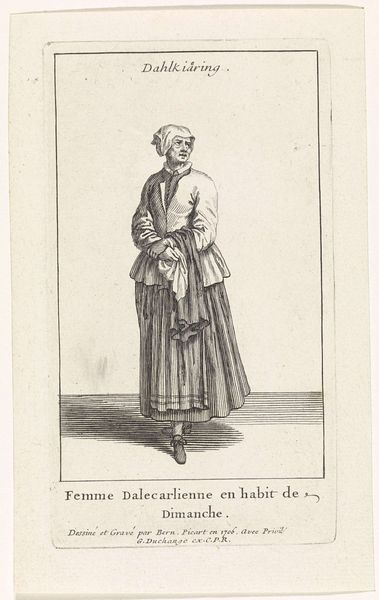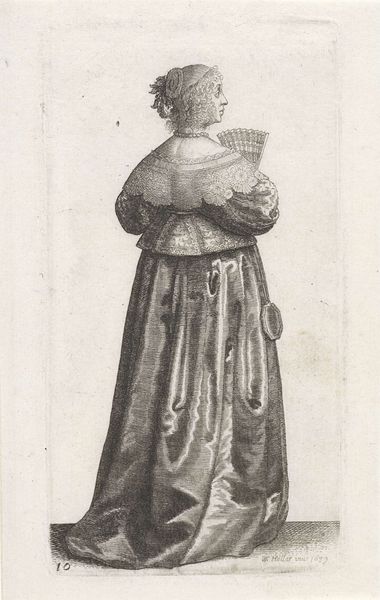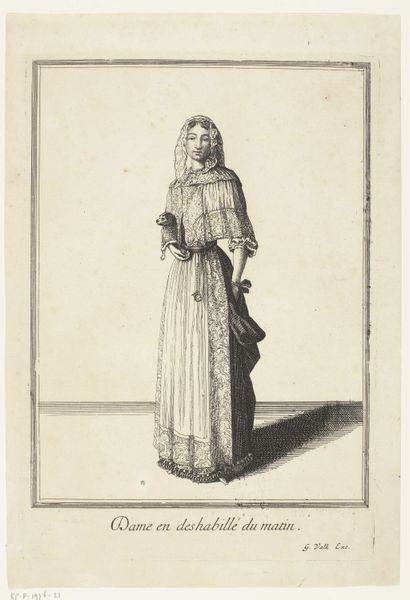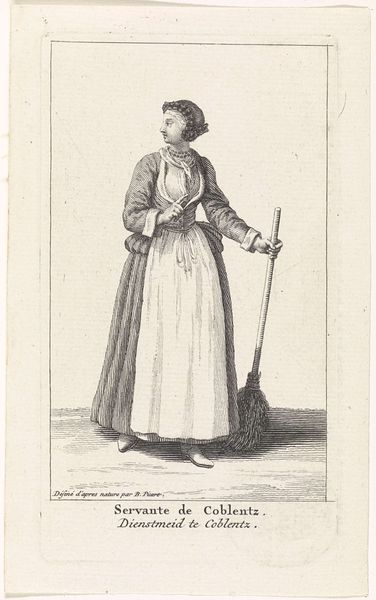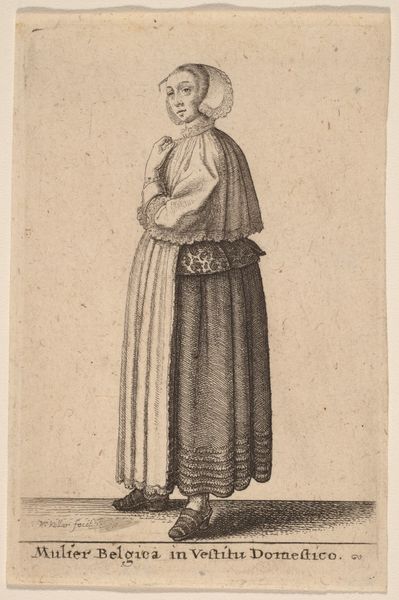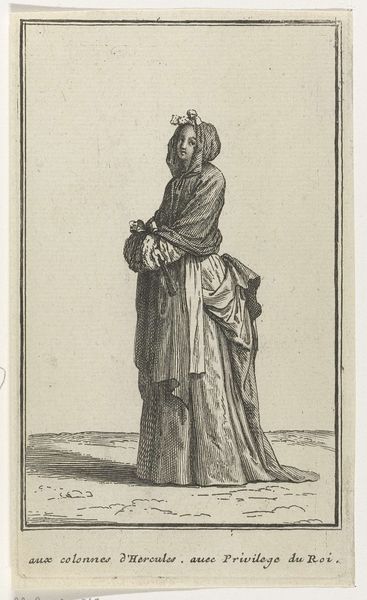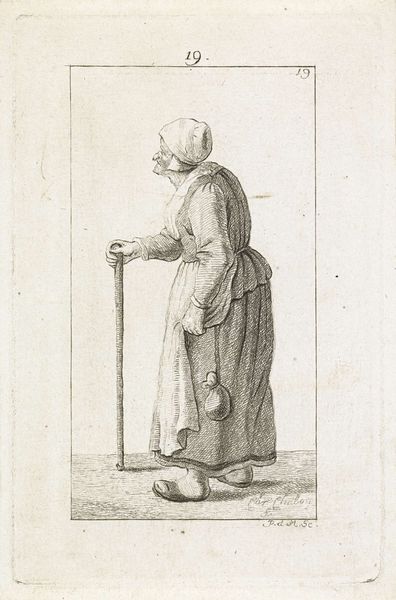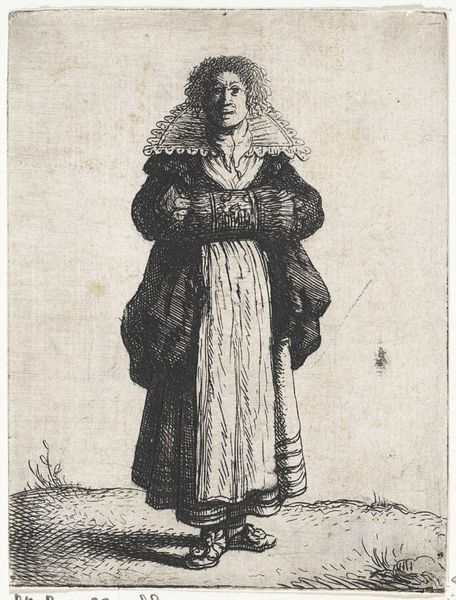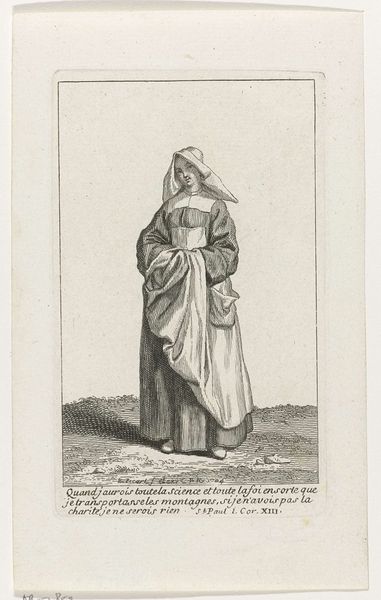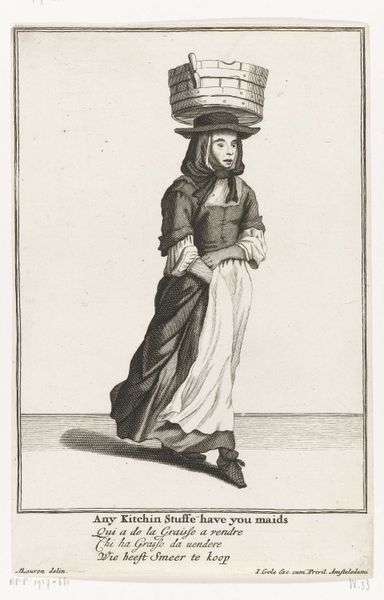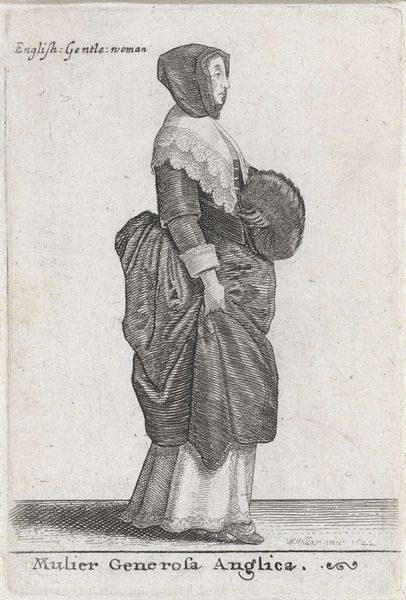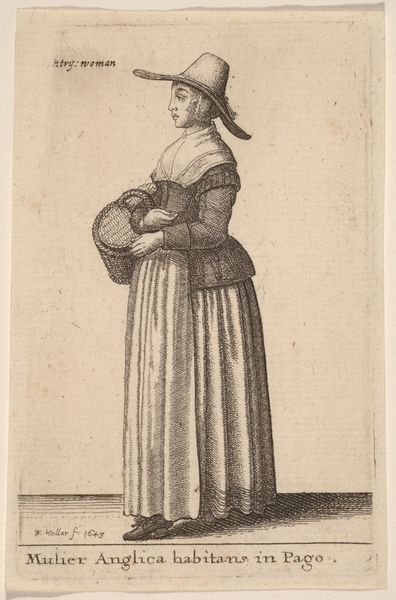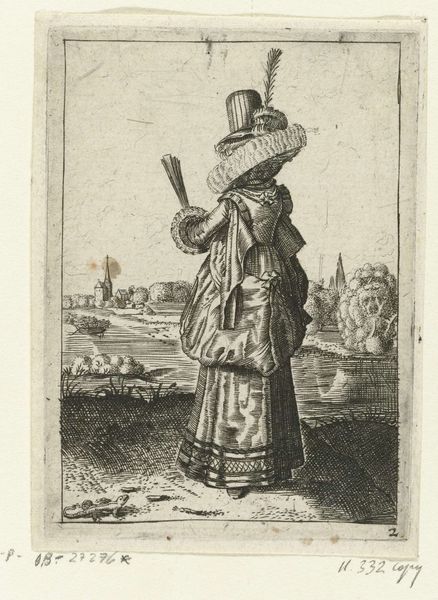
print, engraving
#
portrait
#
baroque
# print
#
old engraving style
#
figuration
#
genre-painting
#
engraving
Dimensions: height 111 mm, width 69 mm
Copyright: Rijks Museum: Open Domain
Curator: This engraving, titled "Non met ketel en lepel in de handen" and created by Bernard Picart in 1706, presents a compelling snapshot into daily life of the Baroque period. It's currently held in the Rijksmuseum collection. Editor: It's interesting, the image has a stark, almost somber quality. The use of line creates a lot of texture, particularly in the subject’s clothing, but overall, it conveys a sense of gravity. Curator: The artwork aligns with the prevailing Baroque fascination with representing emotional intensity. Pictart produced this engraving using detailed lines. How do you interpret this work's function? Editor: Knowing it’s from 1706 immediately situates it within discourses of religion and duty. The figure, dressed in what appears to be a modest religious garb, carries what looks like a cooking pot. A religious person taking care of others who are sick? A political message that everyone has their role and to care for others within their community? Curator: Precisely, and engravings like this one played a crucial role in disseminating moral messages across Europe. Its production and consumption reflected the complex interaction between religious reform and social expectations for women. Pictart subtly encourages individual contemplation within a community. Editor: I agree. Her gentle gaze softens the image, inviting empathy and challenging the stoicism often associated with depictions of devout individuals. It makes me wonder about her internal thoughts and experiences beyond this act of service, adding depth to a genre scene that could otherwise be purely didactic. There's something intensely personal amid the clear social coding. Curator: And the deliberate rendering of light emphasizes this complexity, guiding our eye from the material burdens she carries to her subtly expressive face. It's an effective tool for communicating intended civic action in a turbulent moment. Editor: Absolutely. And beyond the religious framework, one can't help but reflect on contemporary issues around women. I am left wondering, how has charity and servitude continued or changed? How can the conversation expand into more contemporary themes of civic care? Curator: The impact that works of art had on previous societies truly shows its powerful force in this specific artwork. Editor: Right, by considering the social framework that impacted both the construction and appreciation of this artwork.
Comments
No comments
Be the first to comment and join the conversation on the ultimate creative platform.
